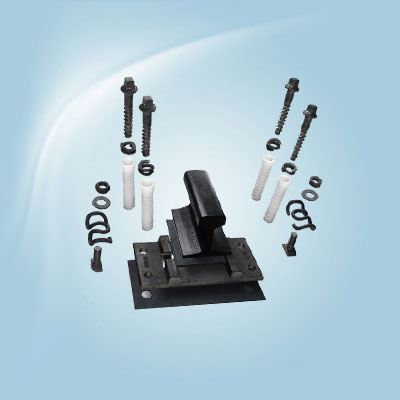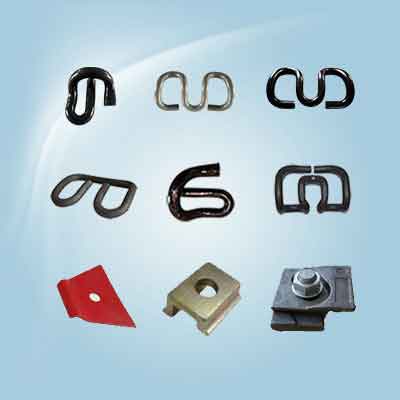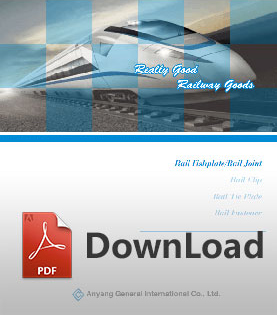How to build a railway track?

As the most important part of railway track system, railway track plays a role in giving a reliable surface for train to run. Railway track have other names like railroad track, track and permanent way. Railway track is simply a type of metal rail for train. There are also highway guardrail and industrial railing system. Since the first track building in the 1825, railway track go through several reforms. Ballasted track and ballastless track are typical types of railroad track. In general, railway track consist of ballast bed, steel rail, railway sleeper, railway fish plate , rail clip, railroad tie plate and other railway fasteners. How to build a railway track with all these components? Here is the guide to introduce the process step by step.
Pre-construction activities
There are some preparative works before railway track construction. Among all the activities, subgrade drainage and materials preparation are common.
- The subgrade drainage is a system that is used to prevent he railway from water logging. The subgrade, road bed and slope of railway track are very easy to be washed by water. If the subgrade drainage measures are not proper, this will lead to the subgrade diseases. It is necessary to install drainage before laying the track. Specifically, it mainly adopts drainage pipes, carrier drains and attenuation ponds in some area.

- The preparation of construction materials is another work before track laying. Ordinary materials include railway sleepers, steel rail, rail fasteners and some construction equipment. Preparation works primarily refer to check the complement and integrity of all materials.
Laying bottom ballast

Ballast bed is the dependable foundation for railway track. According to the construction procedures, ballast bed construction is divided into two parts: bottom ballast and top ballast. There are other procedures between bottom ballast and top ballast laying. So, bottom ballast and top ballast will be separate to introduce.
- Set the thickness of bottom ballast by the design.
- Track design for main track is double track. Bottom ballast is made up medium-coarse sand.
- Spread the railway sleepers. Put sleepers on the each side of railway track equably. Laying railway sleeper on the track manually. Keep the central point of railway sleeper and rail track centerline in alignment.
- The bottom ballast is transported to the track and unloaded equably as planned. The compaction is realized by manual spreading and mini road roller.
Anchorage

Anchorage means the process that fix railroad spike to railway sleeper. This procedure requires materials as follow: Sulphur, sand, cement, paraffin, screw spike. Learn more specific process at how to fastener screw spike to railway sleeper.
Laying steel rail

Steel rail laying mainly include rail apolegamy and track laying.
- Rail apolegamy is a necessary process in the track laying. Measure the length of each rail and rail apolegamy can be based on it. It is suitable to use rails with same length deviation. What’s more, length deviation is less than 3mm, and cumulative deviation is less than 15mm.
- Rail laying start from the rear end of turnout. The length of non-standard rails can be determined by the location of insulation joints. Convey steel rails by the monorail vehicle, then lift them to rail ditch manually.
- When steel rails are placed, connect them and railway sleepers by the rail fastening system and rail components like rail joint.
Top ballast

Top ballast laying means laying ballast on the track and renovate the track to expect result. Top ballast lying has a certain order: transport ballast- spread ballast-track lifting- track lining- filling ballast- tamping- finishing track bed.
The first top ballast laying
- Spread ballast to the track.
- Track lifting. Lifting each rail up to right place and padded with ballast. Maintain every point of steel rail at same level.
- Track lining. Switch road to the centerline, make straight line and curve smooth.
- Tamping. Once the top ballast is ready, the tamping machine starts to work. The tamping is continues tree or four times.
- Filling ballast. Filling crib with ballast.
The second top ballast laying
The second top ballast laying start after some trains pass. Compared to the first top ballast laying, most procedures are same except renovate track.
Rail anchor and rail brace

Rail anchor is used to prevent track from crawling. Rail brace is connected with steel rail through rail bolt and nuts. Both rail anchor and rail brace are designed to keep steel rail in place and ensure the rail safety.
- Rail Fasteners
- rail fastening system
- rail clip
- railroad spike
- Track bolt
- rail shoulders
- rail anchor
- rail clamp
- tie plate
- Rail Pad
- rail insulator
- rail plastic dowel
- other rail fasteners
- Railway Switch
- SKL series rail fastening system
- Chinese standard rail fastening system
- screw spikes
- Crane rail fastening system
- K type rail clip for Africa
- Hey-Back Rail Fastening
- rail fasteners for Mexican market
- Ss25 screw spike
- Ss35 rail sleeper screw spike
- Ss8 screw spike
- coach screw
- Crane Rail Clip
- Rail Joints (Fishplate)
- Steel Rail
- Railway Sleeper
 rail clip
rail clip
 rail joints
rail joints

 Español
Español English
English
